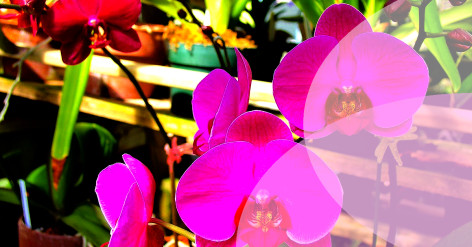How to Propagate Plants in Your Garden

Propagate Like a Pro: 4 Methods to Multiply Your Plants
Gardening enthusiasts often dream of doubling (or even tripling!) their favorite plants without spending a dime. Well, there's good news! With the art of propagation, anyone can learn how to create a plant paradise in their garden by merely multiplying what they already have. In this comprehensive guide, we will walk you through key plant propagation methods that will help you enhance your garden space while saving money.
1. Stem Cuttings: A Simple Route to Success
Plant propagation might sound like a complex scientific endeavor reserved for botanists and horticulturists, but you don't need a fancy degree to master this skill. All it takes is a mixture of patience, persistence, and these four tried-and-true techniques.
2. Division: Multiply and Conquer Your Garden Space
The easiest way to start your propagation journey is to make use of stem cuttings. All you need is a healthy "mother" plant, a sharp pair of scissors, and a well-drained potting mix. Follow these steps to propagate your plants successfully:
- Use a sterilized, sharp pair of scissors to cut a 4-6 inch piece of new growth from your plant, ensuring it contains at least one leaf node.
- Remove any leaves from the bottom half of the cutting.
- Dip the base of your stem cutting into rooting hormone to encourage root development more efficiently.
- Plant the hormone-coated end into a well-draining potting medium.
- Keep the soil consistently moist but not soggy by adding just enough water.
- To boost humidity around your stem cutting, you can cover it with a plastic bag or place it in a mini greenhouse.
- Wait 4-6 weeks for roots to develop before transplanting into a larger container or directly into your garden.
3. Layering: Let Your Plants Do the Work
The division is an excellent method to propagate plants with sprawling roots, like hostas or daylilies. This process involves physically separating a mature plant to create two or more individual plants. To begin, follow these steps:
- Gently dig around the base of your chosen plant, being careful not to damage the roots.
- Carefully lift the plant from the ground, removing as much soil as possible to expose the roots.
- Identify the root clumps or natural divisions in the root system and gently separate them using your hands or a garden knife.
- Plant each section in a well-draining potting mix or directly into the garden.
- Water the divided plants thoroughly and provide them with ample care as they establish themselves in their new location.
4. Seeds: The Classic Route to a Flourishing Garden
Layering is an excellent method for propagating plants that have long, flexible stems like vining plants, climbers, or creepers. This method involves encouraging roots to form along the stem while it is still attached to the "parent" plant. To begin, follow these steps:
- Choose a healthy, long stem on your plant, and locate a leaf node close to the ground.
- Gently bend the stem and bury the selected node (without detaching it from the parent plant) in the soil or in a small pot filled with well-draining potting mix.
- Anchor the buried node in place using a wire or a small, heavy object.
- Give it time! Allow the new roots to form for a few weeks before severing the connection between the mother plant and the newly rooted stem.
- Once the roots have developed, plant your new, independent specimen in the desired location.
Starting plants from seeds is a time-honored tradition that never gets old. Follow these simple steps to start seeds successfully:
- Fill seed trays, pots, or other containers with a well-draining seed-starting mix.
- Gently press seeds into the soil, following the recommended depth and spacing as per the seed packaging.
- Mist the soil with water and cover the tray, pot, or container with a plastic wrap or a clear lid to maintain humidity.
- Place the containers in a warm location, and monitor regularly to ensure the soil does not dry out.
- Once seedlings have sprouted and emerged, remove the cover, and move the containers to a location with bright, indirect light.
- When the seedlings have grown sufficiently and the danger of frost has passed, transplant them into your garden or larger containers.
Plant propagation is not only a cost-effective means of expanding your garden but a rewarding way to connect with nature and nurture your green thumb. Whether you delve into the world of stem cuttings, divisions, layering, or seeds, you will find endless opportunities to revel in the magic of creating new life right in your own backyard. So, gather the necessary tools, be patient and embrace the world of plant propagation. Before you know it, you will have a flourishing garden paradise!





